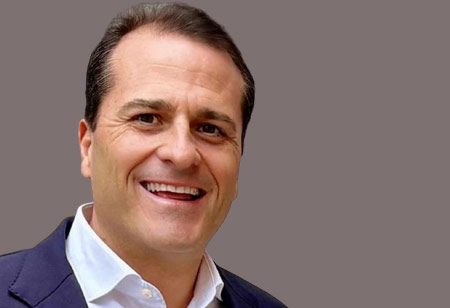

Thank you for Subscribing to Food Business Review Weekly Brief

Francesco Taranto is a dynamic senior executive with 20+ years of expertise in management across sales, brand & marketing, supply chain, manufacturing and retail. Known for driving brand growth, operational excellence, and building high-performance teams, he excels at delivering strategic, costeffective results through strong leadership and communication.
In an exclusive interview with Food Business Review APAC, he shared invaluable insights on revitalizing its brand, strengthening supply chains, and aligning cross-functional teams positioning the company for scalable growth and renewed consumer trust in the FMCG sector. 1. Can you share the key experiences and milestones in your career that led you to your current role at Catalano's Seafood and how they have shaped your leadership philosophy? Over the past 20+ years, I’ve held senior roles leading commercial and operational teams across FMCG, retail, and manufacturing businesses. My experience with Harvest Road Group, D’Orsogna Smallgoods, and IGA Brindle Group has been pivotal in sharpening my ability to drive growth delivering national and international sales, launching private label ranges, and building vertically integrated supply chains. Joining Avior Capital Partners on the Catalano’s Seafood Acquisition marked a defining milestone in my career, leading the transformation of a distressed regional brand into a viable national contender. I’ve always been drawn to complex operational challenges, particularly where brand potential is stalled by structural inefficiencies. I lead with energy and purpose, aiming to inspire teams and foster long-term relationships with customers and stakeholders. This approach has enabled me to build a high-performing, cross-functional team and deliver strong commercial outcomes in a fast-paced, customer-driven environment while staying true to Catalano’s brand values and legacy. 2. You've overseen the integration of distressed assets into cohesive national platforms, how do you determine which operational inefficiencies to tackle first without disrupting daily business continuity? The key is to stabilise the core while building the roadmap. When integrating distressed assets, we begin with a mission-critical audit identifying which issues directly impact revenue, safety, and service levels. We prioritise fixes that provide immediate stability without creating cultural or logistical friction. Often, this means focusing first on the supply chain rhythm forecasting, ordering, and fulfilment which is typically under strain. At the same time, we deliberately defer non-essential transformations until the team is confident and properly resourced. Transparency is crucial: bringing people into the why of each change helps secure buy-in and ensures continuity isn’t sacrificed for the sake of urgency. It’s about being surgical identifying quick wins that build momentum while laying the groundwork for larger structural change, always keeping customers and delivery front of mind. 3. When scaling seafood operations nationally, what operational constraint surprised you the most and how did you overcome it without compromising product quality or speed to shelf? When scaling seafood operations, the biggest constraint that stood out was maintaining consistent supply availability while navigating cold chain logistics and meeting the fast-paced demands of FMCG retail.Reviving a brand isn’t just about changing the product it’s about rethinking the strategy, reigniting purpose, and earning trust all over again

However, if you would like to share the information in this article, you may use the link below:
https://www.foodbusinessrevieweurope.com/cxoinsight/francesco-taranto-nwid-1598.html